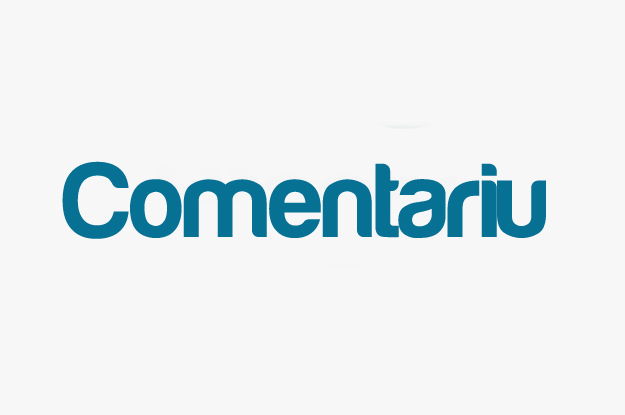Vasile State,  Executive Director of Electronic Press Association from Moldova (APEL),
coauthor of the study on internal pluralism of the media in Moldova
Executive Director of Electronic Press Association from Moldova (APEL),
coauthor of the study on internal pluralism of the media in Moldova
Foreword
Although, at the European level, the past decade was marked by a constant concern for media pluralism, it is only now that a comprehensive study in this area appeared in the Republic of Moldova. The study was presented in September 2014 with the support of Soros Foundation Moldova.
The media pluralism should be understood in the broadest sense, both in terms of media outlets, as well as at the system level. Pluralism has an internal and an external dimension. The first relates to the diversity of products within an institution, while the second one refers to the media market as a whole and to the number and the diversity of media content providers.
Media pluralism: the external dimension
In Europe, it is recognized that the pluralism requires a wide range and types of media organizations. In this regard, according to a
study conducted by the Romanian Center for European Policies and ActiveWatch – Romania, which focused on the external dimension
[1], the Moldovan media market was seem to be unbalanced in terms of political, cultural and geographical pluralism.
Thus, in the absence of some precise regulations on the ownership transparency, the main TV stations and online publications are concentrated in the hands of a couple of political figures. The domestic media space is dominated by Russia's major television stations. At the same time, although there are many local newspapers, websites and TV stations, the press is concentrated mostly in Chisinau.
Media pluralism: the internal dimension
In the European Union there is a quasi-unanimous approach on the idea that pluralism and media content diversity are essential for the good functioning of a democratic society. , Thus, the assessment of the media pluralism degree in the Republic of Moldova on the internal dimension
[2] within the
study conducted by the Electronic Press Association is of the utmost importance.
According to the research, two channels with nationwide coverage broadcast during prime time products predominantly in a language other than Romanian, thus reducing their relevance for a good part of the audience represented by majority of the population. With some exceptions, most TV stations continue to rely on programs taken from the outside, especially from Russia. The attested situation is dangerous for both internal media pluralism and the relevance of the media products provided to the public.
Measures to protect pluralism
Within the research, we have found serious deficiencies with detrimental impact for the internal media pluralism. The reduced pluralism level can be explained by the lack of a legal framework that could counteract the emergence of monopoly and dominant market positions, and fight the policy makers’ lack of concern on the one hand. Another explanation is the institutions’ limited interest and capacity to diversify their media products.
Beyond finding constraints, steps need to be taken to improve the situation in terms of media pluralism and diversity of media products offered by institutions. A Roadmap[3] was developed in this respect, comprising a series of recommendations the implementation of which would boost the consolidation of media pluralism.
Media pluralism: the European experience
In 2009, the European Commission published the
"Independent Study on Indicators for Media Pluralism in the Member States - Towards a Risk-Based Approach”
[4] comprising the a deep approach of media pluralism notion, including, in addition to contents, the political, cultural, geographical and structural dimensions.
At the same time, it was decided to create a tool for assessing the threats to media pluralism in the EU Member States, called the Media Pluralism Monitor. Late last year, the European Commission has provided a grant to the Centre for Media Pluralism and Media Freedom with a view to implementing a pilot project in nine countries: Belgium, Bulgaria, Denmark, Estonia, France, Greece, Hungary, Italy and the UK. The results of this research are expected to be provided at the end of the current year.
[1]“ Pluralismul extern al mass-media în Republica Moldova: între oportunitate şi realitate” (External media pluralism in the Republic of Moldova: between opportunity and reality), edited by the Romanian Center for European Policies and Active Watch – Romania for Soros Foundation in Moldova. Chisinau, 2014
[2]“ Pluralismul intern al mass-mediei din Republica Moldova: oportunitate şi realitate”,
Internal media pluralism in the Republic of Moldova: opportunity and reality, edited by the Electronic Press Association for Soros Foundation in Moldova. Chisinau, 2014
[3]“Roadmap
for strengthening the media pluralism the in Republic of Moldova”. Chisinau, 2014
[4]“Independent Study on Indicators for Media Pluralism in the Member States - Towards a Risk-Based Approach” (Directorate-General Information Society and Media) by K.U. Leuven – ICRI, Jönköping International Business School – MMTC, Central European University – CMCS and Ernst & Young Consultancy Belgium. Leuven, 2009
_______________
The article was published within the Advocacy Campaigns Aimed at Improving Transparency of Media Ownership, Access to Information and promotion of EU values and integration project, implemented by the IJC, which is, in its turn, part of the Moldova Partnerships for Sustainable Civil Society project, implemented by FHI 360.
This article is made possible by the generous support of the American people through the United States Agency for International Development (USAID). The content are the responsibility of author and do not necessarily reflect the views of USAID or the United States Government.












